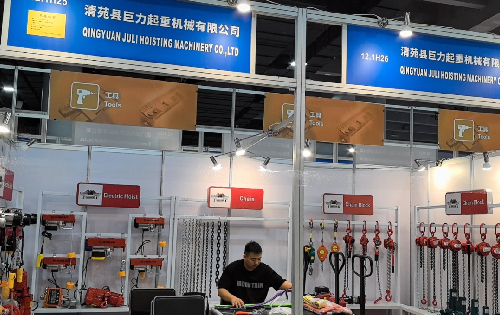


Chain Hoist Operation A Comprehensive Guide
Chain hoists are invaluable tools in various industries, including construction, manufacturing, and maintenance. They are designed to lift and lower heavy loads with ease and efficiency. Understanding how to operate a chain hoist safely is essential for both professionals and novices alike. This article will delve into the fundamentals of chain hoist operation, including safety protocols, operational guidelines, and maintenance tips.
What is a Chain Hoist?
A chain hoist is a mechanical device used to lift and lower objects. It comprises a length of chain, a pulley system, and a manual or electric mechanism that facilitates movement. Chain hoists are available in two main types manual and powered. Manual chain hoists rely on human effort to operate, while powered chain hoists use electricity or pneumatic power to lift loads.
Safety Considerations
Safety should always be the top priority when operating a chain hoist. Here are several critical safety considerations
1. Training and Certification Operators should undergo proper training and, where applicable, certification. Understanding the machinery, load capacities, and operation methods is crucial to ensuring safe usage.
2. Inspection Before using a chain hoist, a thorough inspection is vital. Check for wear and tear on the chain, ensure the hooks are not deformed, and verify that the braking system is functional. Any signs of damage should be addressed immediately by a qualified technician.
3. Load Limits Each chain hoist has a designated load capacity. It is essential to respect these limits to avoid accidents and maintain equipment integrity. Never exceed the rated load, and use scales or load indicators when necessary.
4. Work Environment The area where the hoist is being used should be free of obstacles, unnecessary personnel, and any hazardous conditions that could compromise safety. Ensure there is sufficient clearance above and around the load.
5. Personal Protective Equipment (PPE) Operators should always wear appropriate PPE, including hard hats, gloves, and steel-toed boots. Protection should be tailored to the specific working environment and potential risks.
Operating a Chain Hoist
Operating a chain hoist involves several straightforward steps

1. Setup Position the hoist securely on a stable structure or beam. Make sure the suspension point is level and can support the weight of the load.
2. Attaching the Load Use hooks or slings to securely attach the load to the chain hoist. Ensure that the load is balanced to prevent swinging or tipping during the lift.
3. Lifting the Load Engage the hoist mechanism—either manually or by activating the electric component. Slowly lift the load, keeping an eye on surroundings and ensuring the pathway is clear.
4. Holding the Load When the load reaches the desired height, engage the braking mechanism to hold it in place. Ensure that the load is stable before proceeding with any tasks.
5. Lowering the Load When ready to lower the load, carefully release the brake and control the descent speed. Always lower the load smoothly to prevent sudden drops.
Maintenance Tips
Regular maintenance is crucial for ensuring the longevity and safe operation of chain hoists
1. Routine Inspections Conduct daily checks for signs of wear, rust, or malfunction. Look for any unusual noises during operation that could indicate mechanical failure.
2. Lubrication Regularly lubricate the chain and moving parts to reduce friction and prevent premature wear. Refer to the manufacturer's guidelines for appropriate lubrication schedules and products.
3. Cleaning Keep the chain hoist clean and free from debris. Dirt and grime can interfere with the operation and lead to equipment failure.
4. Professional Servicing Schedule professional inspections and servicing according to the manufacturer's recommendations or local regulations. This will ensure that all components are functioning correctly and safely.
Conclusion
Proper chain hoist operation is critical in ensuring workplace safety and efficiency. By following established safety protocols, understanding operational guidelines, and maintaining the equipment regularly, operators can maximize the effectiveness of this powerful tool while minimizing risks. Whether in a construction site or a manufacturing facility, mastery of chain hoist operation is an essential skill for enhanced productivity and safety.



